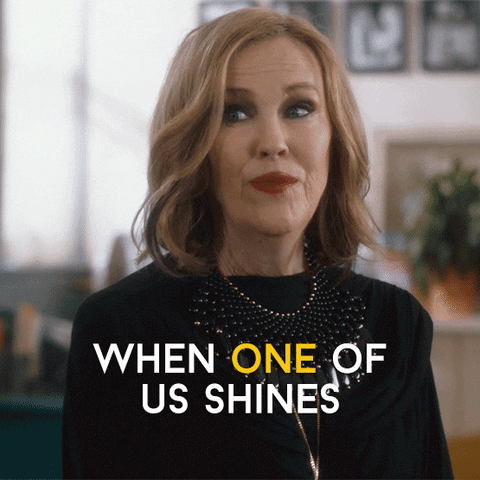If you are on the quest for time-saving, lead optimising, ROI-boosting or simply seamless, efficient marketing automation, here are the top 3 things you need to know to really advance your success.


1. Don’t eat the elephant whole. You will get indigestion.
The thing with a marketing automation tool is to learn to walk before you run. There is an overwhelming set of functions and a lot to get your head around from a technical point of view when you start out.
Our top tip is to focus on ONE product proposition in the initial months and build your confidence and proficiency with it.
Set the expectation internally that that is what you are going to do and give yourself a reasonable timescale to do it. Uplift on performance can take time to prove.
Why? Automated marketing works well when your marketing is structured and organised from the start. It can make your marketing buzz and relieve your team of repetitive, manual tasks, enabling you to focus on strategy and content. It’s important to have a clear brand and product story, with identified segments and key messaging from the start. If you don’t have this, your journey with marketing automation will be tougher and you risk replicating existing marketing problems on a more difficult technical platform. Starting with one proposition only gives you a little bit more space to build contact journeys that will really sing.
Top Tip. If you haven’t got an in-house expert, it may make sense to outsource one – at least for a while. External help will help you get going faster and identify the buttons and bells you really need to get to know, versus the ones you don’t. So many of our clients have found they have an expensive email or social media tool rather than a smart marketing automation tool because they don’t have the time to truly find their way around it. Outsourcing to a team, proficient in marketing and HubSpot could reduce the risk of delay in creating an efficient machine.
Why it’s important
“54% of marketers feel they are NOT using their marketing automation tool to their full potential. A further 26% are not sure.”
Ascend2 2021
2. Don’t cultivate a saggy middle. Think full funnel from the start.
In our experience, we still see a great deal of focus on content for the top of the funnel – plenty of content to entice people to make that all-important initial contact. But little time is really spent building out what comes next – beyond the company newsletter (Honestly now, how many of those do you actually read?) This often means leads get lost, performance falls and your sales teams get frustrated and grumpy. And your boss does too.
But how to prevent it? Everyone tells you what not to do but not how to do it.
Our tried and trusted remedy – close collaboration with sales from the get-go.
Your salespeople are the ones who talk most frequently and recently to your customers. They know what your prospects want and need to know as they navigate their own personal way through their buying process – even at some of the early stages.
They know what questions prospects are asking, what motivates them to take the next step and where they are quite simply getting stuck. And they often get feedback on what the competition is doing better ‘on the ground’.

Top tip. Start each campaign workshopping with sales. It brings sales on board with your marketing plans and the exchange of information, marketing to sales and back again, enriches your ideas. It helps you align your marketing and sales activity, so you can be more efficient, and your customers get a better experience. It will help you shape useful sales enablement tools along the journey. Your sales teams will thank you for that, and, in some cases, stop creating their own assets with the usual ‘slightly adjusted brand’ style.
We map the whole buying process, against our clients’ internal milestones. Exploring for each of our buying personas what they need from the brand, where they look for it – and the behavioural outcomes we are looking for at each stage. Apart from generating some fascinating and useful insights, it helps us build content plans for each step of the buying process, from message to format and channel. It helps to support sales in opening the right kinds of conversation and ensures that qualification is built into the process appropriately. And frankly, it has got a higher fun factor than staring at a blank sheet of paper or building an approach through stats alone.
Why it’s important for sales and marketing to work collaboratively.
52% of sales leaders say that misaligned sales and marketing teams have cost them revenue, and more than one-third report that it prevents both teams from succeeding. A third of sales leaders find that when sales and marketing aren’t aligned it wastes marketing budget.
HubSpot 2022 sales report
Practical Example
A workshop with the sales team for a major UK energy company unearthed that one significant factor holding conversion back was understanding the price and cost benefit of the product being considered. Costs were personal and dependent on a number of factors.
There was a thorough but long process to deliver the sought-after cost-benefit analysis involving meetings and an allocation of significant time by the buyer – who wanted a quicker answer. This led to the idea of a personalised tool, which, when hosted in HubSpot automation software, enabled the business to pre-qualify as well as advance the prospect more quickly through the sales funnel. It provided a rough but personalised guide to cost-benefit, based on a number of factors, an argument for the board, and, a better experience for customers too.

3. Don’t forget one size doesn’t fit all.
Cut your cloth around each of your very different audiences!
OK we might seem a little obsessed with tailoring, but it really matters. Tailored content and journeys really do uplift results. Recognising the many different people who are involved in a major business buying decision (and incidentally up to 23 people can be involved) improves your chances of lead conversion success. It stands-to-reason that if a wider number of your decision-makers already have a positive experience of your brand (or at least know who you are and what you stand for), you already have an advantage.
But don’t let perfect stand in the way of ‘better’
Common sense and practicality have a serious role to play. There is no point in trying to tailor journeys for everyone if you simply don’t have the bandwidth to do it (and if you haven’t been able to do the mapping with sales that we recommend). Be practical and get going.
Top tip. Begin your persona planning with primary decision-makers. How do they segment? Do you have a different core message for international buyers versus local, or for different sectors? Then move to your key influencers setting out how they influence (and when in the process). Map out the primary and secondary support messages for each of the personas across the journey and then step back and review it with a practical eye. You may well find that there are just a handful, or fewer, key personas with highly differentiated message needs – or there is simply a priority to work with that makes the task more manageable. Either way, you will have a prioritised template of your potential stakeholders and their messaging needs.
Why it’s important
“Personalization drives performance and better customer outcomes. Companies that grow faster drive 40% more of their revenue from personalization than their slower-growing counterparts.”
McKinsey
A last thought.
Back in the 1990s jubilant software companies rode in from the west with the panacea to solve all marketing challenges – CRM. Systems were installed, configured with enthusiasm, and let loose on a perplexed operational staff. These systems didn’t make marketing better and a big fail for some companies was in leaving the operational marketing team behind which meant the processes and the understanding often lagged behind the software and marketing plans were out of sync. These systems didn’t improve marketing, but they facilitated better management and efficiency. The marketing bit was down to the operational staff – the marketers themselves. Automation is no different. The better our marketing plans, the better our customer journeys will be and the better our outcomes will be. The more collaboration we undertake across the funnel, the more buy-in and efficiency we can achieve.
